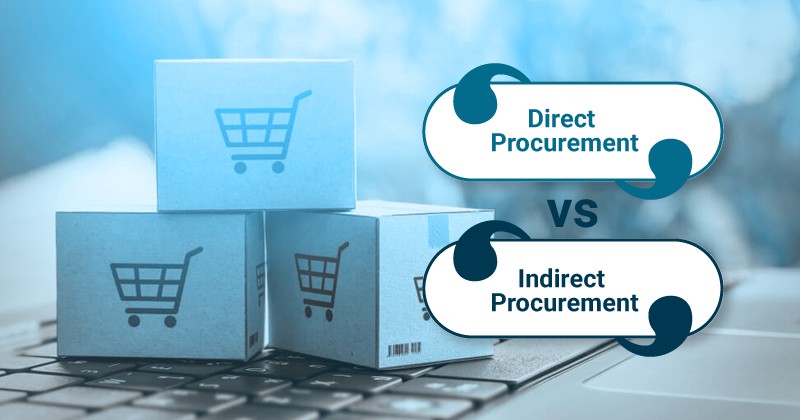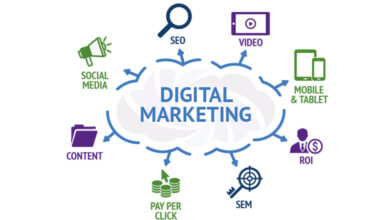
What is the Difference Between Direct Procurement vs Indirect Procurement?
The procurement process is a crucial function of any organization, capable of guaranteeing a constant flow of required supplies and services, or as it is sometimes called, direct operations procurement, involving the acquisition of supplies, components and services directly needed for production activities. Indirect procurement, also sometimes referred to as non-production procurement, is concerned with the purchase of items and services that support overall operations and its infrastructure. Understanding the distinction between direct procurement vs indirect procurementis vital for effective supply chain management and cost optimization. Management goes beyond simple procurement. In order to effectively manage suppliers and optimize costs, for example, it will be necessary to create a system that integrates quality control with process efficiency and new technology.
Table of Contents
Direct Procurement
Direct procurement, the other name is also operational procurement or production procurement, is the act of receiving supplies, components, and services into a company and these are the items that are directly connected to the production of the goods of a company or the company’s services. These are the key items necessary to enable the business to carry on with the principal operations, and these are although they are incorporated into the final product or service.
Characteristics of Direct Procurement
- Direct Relationship with Production: Direct buying includes all the raw materials, parts, ingredients, and the services which are directly related to the production of the final product or providing the offerings to the consumers. The level of performance and the quality is therefore directly linked to the quality of the raw materials.
- Critical for Operations: Direct procurement is focused on the purchasing of those items that supply the organization processes and are very important in this context. These materials and components are vital ingredients that absolutely cannot be missing from the company if it wants to deliver timely and quality products.
- Long-term Supplier Relationships: Companies usually make a long-term relationship with suppliers of direct procurement in order to obtain good-quality and constant-supply inputs that are indispensable. These relationships being all that good for the production without interruptions and customers being provided with the needed that are necessary.
- Strategic Importance: Procurement from a direct sourcing agency is viewed as a strategic function, acting as a catalyst for the quality, costing and availability of the final product or service. The result of direct procurement management is a competitive advantage because of optimized costs, guaranteed flow of goods, and procured items conforming to the required standards.
Examples of Direct Procurement
- Raw materials into manufacture of goods (e.g., steel, plastic, chemicals).
- Components and parts required for assembly for instance (e.g., parts of electronics, mechanical components).
- Externalized manufacturing (in the form of warts that service contract (e.g., contract assembly, specialized manufacturing))
- Logistic services comprises a set of functions which we can further delineate as all the processes involved in transportation and warehousing.
Indirect Procurement
Indirect procurement is otherwise called non-production procurement or support procurement which deal with the purchasing of items and services that do not have a direct influence on a company’s manufacturing of goods or rendering of services. That is, these supportings represent the organization’s operations and infrastructure but don’t add even to the final goods or service constructions.
Characteristics of Indirect Procurement
Supports Operations: Indirect procurement identifies the purchase of goods and services, which sustains the firm’s overall production and internal structure, but cannot be utilized in the production of the company’s goods or the delivery of services.
Facilitates Business Functions: The certain activities like marketing, human resources, IT, technical maintenance department and the administrative tasks are being able to utilize indirect procurement items.
Diverse Range of Categories: Comprising of a lot of categories, it is indirect procurement which involves things like stationery and office supplies, IT equipment, furniture, and utilities and also services from consultants.
Centralized Procurement: Lots of companies try to maximize the strategic impact of indirect procurement functions by centralizing them, so they can standardize the processes, leverage economies of scale, and negotiate better contracts with suppliers.
Examples of Indirect Procurement
- Some of the expenses incurred in the business day to day include: printing paper, computer consumables among others.
- IT equipment, such as computers, servers, and a number of software licenses (for example – computers, servers, and all types of software licenses).
- Facilities management services are examples of clean up (e.g., cleaning, maintenance, utilities).
- Promotional marketing and advertising services (Examples: Print advertisement, digital promotions)
- Among the activities that professional services provide (such as legal advice, accountancy, and consultancy)
Efficient Management Of Both Direct Purchase and Indirect Supply Channels
Both of them, direct and indirect, are very important parts of organizational profitability. Efficient functioning of these modules is the key to the cost optimization, backup of supply reliability, continued quality standards as well as the business adoption.
Direct Procurement Management
- Establish strategic suppliers’ relationships and supply base that would provide sufficient alternatives.
- Solicit suppliers via a bidding process and supply quality materials only from those that meet the evaluation and selection criteria.
- Please agree with chargeable rates and terms offered by suppliers.
- Provide for an observance of the produced goods before it goes to the market and that all the products are up to par with the industry standards.
- Optimize Inventory for Optimal Levels and Use Lean Practices
- Use new IT technologies for the process improvement and figure out the situation.
Indirect Procurement Management
- Concentrate and standardize the indirect procurement practices in the organization.
- Use the leverage advantage of Impounded priced through the aggregated procurement.
- The cost reduction may be achieved by methods like bulk discounts, indirect cost or supplier rationalization.
- To be able to optimize the procurement workflows and plug the gaps wherever probable.
- Research alternative source strategies, including the group organizing such as group purchasing organizations (GPOs)
- Adopt spend analytics and category management as a key approach to financial risk management.
Conclusion
Understanding their differences is vital for effective supply chain management and cost optimization. Effective management requires a comprehensive approach, considering supplier relationships, quality control, cost optimization, process efficiency, and technological integration. Implementing best practices with eauction software can streamline procurement activities, reduce costs, ensure reliable supply, and drive business success.








